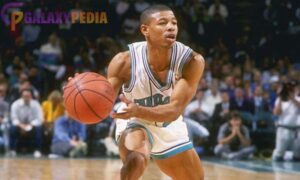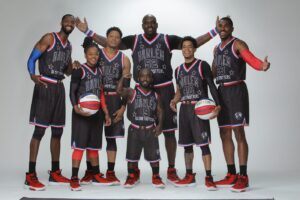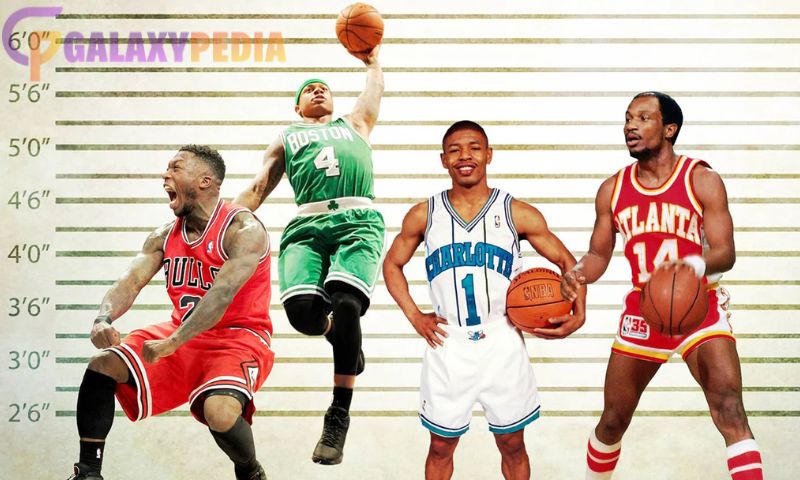Basketball is often associated with height, with towering athletes dominating the game. However, some players have broken stereotypes and proven that skill, agility, and determination matter more than height. The shortest basketball player in history has left a lasting impact, showcasing that height is not a limitation in professional basketball. This article explores the shortest players in the game, their achievements, and how they carved their place in NBA history.
Who is the Shortest Basketball Player in NBA History?
The title of the shortest basketball player in NBA history belongs to Muggsy Bogues, who stood at just 5 feet 3 inches (1.60 meters) tall. Despite his small stature, he had an impressive 14-season career in the NBA, playing for teams like the Charlotte Hornets, Washington Bullets, and Toronto Raptors. His ability to defend against taller opponents and his exceptional passing skills made him one of the most respected players of his time.
Muggsy Bogues: A Trailblazer for Short Players
 Muggsy Bogues proved that basketball is not just for tall players. He used his speed, ball-handling skills, and vision to become a key player for his teams. Born in 1965, Bogues faced doubts about his career due to his height, but he silenced critics with his exceptional performance. His career highlights include leading the Hornets to multiple playoff appearances and ranking among the top assist leaders in the league
Muggsy Bogues proved that basketball is not just for tall players. He used his speed, ball-handling skills, and vision to become a key player for his teams. Born in 1965, Bogues faced doubts about his career due to his height, but he silenced critics with his exceptional performance. His career highlights include leading the Hornets to multiple playoff appearances and ranking among the top assist leaders in the league
Other Notable Shortest Basketball Players in NBA History
While Muggsy Bogues holds the record, several other short players have made their mark in the NBA. These players include:
Earl Boykins (5’5”) – One of the shortest yet most dynamic players, Boykins played for multiple teams and was known for his scoring ability.
Spud Webb (5’7”) – Famous for winning the 1986 NBA Slam Dunk Contest, proving that height is not a limitation in athleticism.
Mel Hirsch (5’6”) – Played in the 1940s, proving that short players have always had a place in the sport.
How Do Short Players Excel in Basketball?
Despite being at a height disadvantage, the shortest basketball player can leverage several strengths to compete at the highest level:
Speed and Agility – Shorter players are often quicker and more agile, allowing them to maneuver past taller defenders.
Dribbling Skills – With a lower center of gravity, they excel at ball handling and passing.
Defensive Quickness – While they may not block shots easily, they disrupt plays and steal the ball effectively.
Shooting Accuracy – Many short players focus on precise shooting to contribute offensively.
Challenges Faced by the Shortest Basketball Player
Although short players can succeed, they face several challenges in professional basketball, such as:
Limited Defensive Reach – Taller opponents can shoot over them more easily.
Difficulty in Rebounding – Height plays a crucial role in grabbing rebounds, making it tougher for shorter players.
Stereotypes and Doubts – Many teams hesitate to draft shorter players due to traditional preferences for height.
Inspirational Stories of Short Players Making It Big
The success of the shortest basketball player in NBA history serves as an inspiration to many aspiring athletes. Players like Spud Webb and Earl Boykins proved that skill and perseverance could overcome physical limitations. Many young athletes look up to these players, understanding that hard work and talent can defy expectations.
The Role of Shortest basketball Player in Modern Basketball
In today’s game, short players continue to thrive. With a greater focus on three-point shooting and fast-paced play, shorter guards find more opportunities to shine. Players like Chris Clemons (5’9”) and Isaiah Thomas (5’9”) have demonstrated that height is not a prerequisite for success.
Training Tips for Short Basketball Players
If you are a shorter basketball player aspiring to make it big, consider focusing on:
Developing Quickness – Work on speed drills to enhance agility.
Mastering Ball Handling – Become proficient in dribbling and passing under pressure.
Shooting Consistency – Improve your jump shot and three-point shooting.
Strength and Conditioning – Build core strength to hold your ground against bigger opponents.
FAQs
1. Who is the shortest basketball player in NBA history?
Muggsy Bogues, standing at 5 feet 3 inches, is the shortest player ever to play in the NBA.
2. Has the shortest basketball player ever won an NBA championship?
While Muggsy Bogues never won an NBA championship, he had a highly successful career and played a crucial role for his teams.
3. How do short players compete with taller opponents?
Short players rely on speed, agility, dribbling skills, and accurate shooting to compete effectively against taller opponents.
4. Has a short player ever won the Slam Dunk Contest?
Yes, Spud Webb (5’7”) won the 1986 NBA Slam Dunk Contest, proving that height is not a requirement for dunking.
5. Can a short player make it to the NBA today?
Yes, with strong skills, exceptional work ethic, and adaptability, short players continue to find opportunities in the NBA.
Conclusion
The journey of the shortest basketball player in NBA history serves as an inspiration for aspiring athletes worldwide. Despite height disadvantages, players like Muggsy Bogues, Spud Webb, and Earl Boykins have proven that skill and perseverance can break barriers. Basketball is a game of talent, and no matter how tall or short you are, dedication and passion can take you to the top. If you dream of playing basketball professionally, remember that height is just a number—your abilities define your success!






